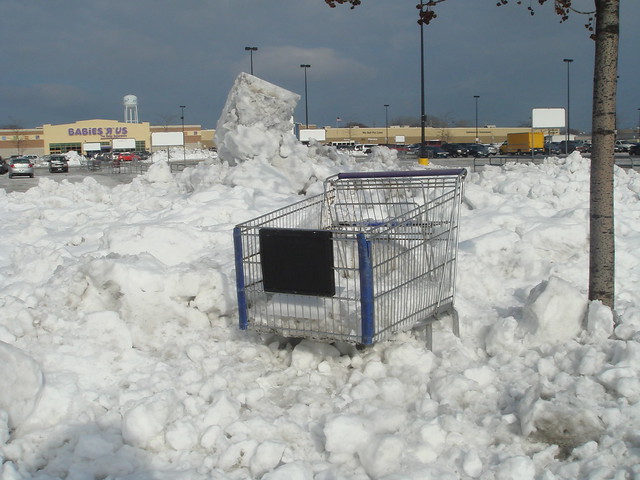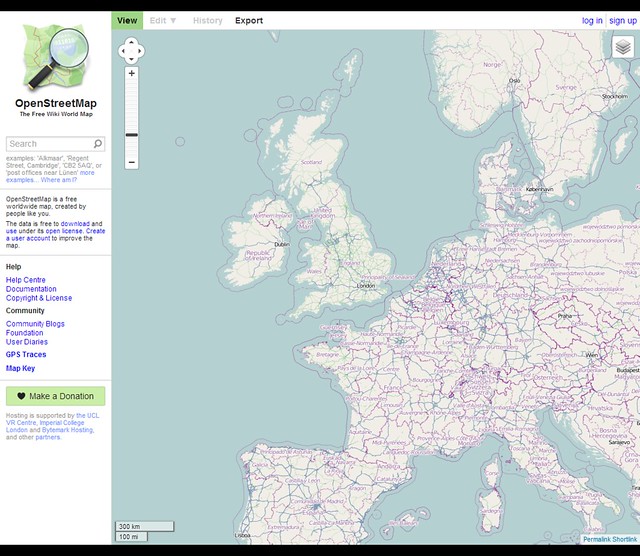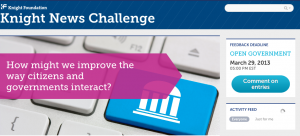TL;DR: Adopt-a-sidewalk is a flawed, under-utilized application with enormous potential. By refocusing the user experience on addressing actual needs of people in Chicago and showing meaningful activity, it could be a powerful tool for engaging citizens in supporting and improving the civic infrastructure in their community.
Winter is officially in Chicago’s rearview mirror, although you would not notice from the chilly temperatures outside. This post is a reflection on one of Chicago’s winter-weather civic applications, Adopt-a-sidewalk, an application I helped bring online over a year ago, and how it can evolve to improve the lives of Chicago residents year-round.

Adopt-a-sidewalk is a Chicago-based version of the Adopt-a-hydrant web application built by Code for America in Boston back in 2011. Developed by Code for America fellow Erik Michaels-Ober, Adopt-a-hydrant lets residents of Boston volunteer to clear fire hydrants when there is a snow storm.
In the fall of 2011, City of Chicago officials, acutely aware of the severity and importance of swift snow removal, saw an opportunity to repurpose the code, and invited a group of civic developers to customize the application for use in Chicago. The key functional difference between the applications is that in Chicago, residents can request help clearing their sidewalk. Adopt-a-sidewalk first went live as part of ChicagoShovels.org in January 2012, and generated a bit of fanfare in local and national media:
- New York Times: Snow Site Lets Chicago See if Plows Are Really in a Rut
- ABC7 News: Mayor’s office launches ChicagoShovels.org
- Chicagoist: City’s Adopt-A-Sidewalk Website Launches
Adopt-a-sidewalk saw moderate adoption, but quickly fell out of use due to a very mild winter, and the fast arrival of spring a few months later. In the fall of 2012, the City of Chicago asked the Smart Chicago Collaborative to assume the responsibility of hosting the application, and development responsibilities were handed over to the Code for America Chicago brigade.
To date, Adopt-a-sidewalk has seen very little adoption in Chicago. There are 557,793 individual sidewalk segments available for adoption, but only 75 registered users. 153 sidewalks have been claimed, either by volunteer shovelers, or people asking for help. That means that only 0.027% of all sidewalk segments in Chicago have been adopted. At its busiest, only 200 people visited the site in a given day.
There are three major issues that impact the usability and adoption of Adopt-a-sidewalk.
First, plainly speaking, the application is boring. In the case of a snow storm, there is a sense of urgency to responding and cleaning up the mess. The City deploys a fleet of snowplows to clear the streets, and neighborhoods are abuzz with residents scraping cars, shoveling steps, and snow-blowing their sidewalks and alleys. On Adopt-a-sidewalk, there is absolutely no perception of activity, urgency, or community. There is no mechanism to show users where activity is happening, or if there is a need for activity. On their first visit to the site, users are presented with a featureless, generic Google map of the city of Chicago, and no clear call to action. If the user does decide to register and adopt a sidewalk, there is little incentive to return or to refer friends to the site.
Second, the path to participating is laden with friction. Users must search using a real Chicago street address and register for an account before they may participate. Registering an account involves giving a name, email address, a password, and completing a captcha. There’s no mechanism to invite your neighbors to join you in shoveling, nor is there a mechanism to share your activity with your social network.
Third, the application is useless when there is no snow on the ground. Adopt-a-sidewalk is irrelevant in the summertime, and, for most of the winter spent between snow storms. There is no incentive to return to the site, and there is no meaningful action to take in between snow storms.
On a conceptual level, the premise of Adopt-a-sidewalk is flawed. Chicago residents are already expected to and, by ordinance, required to, shovel their sidewalks. Adopt-a-sidewalk provides no benefit to users who adopt the sidewalk in front of their house and dutifully shovel it each time snow falls. The steps to register and adopt their sidewalk is busy work.
The real work
Instead of asking users to do monotonous work, Adopt-a-sidewalk should focus on providing a real service: matching people in need of help with people willing to help. In that scenario, there are two key classes of users: people who cannot clear their sidewalks and people who are willing to help shovel sidewalks near them.
By shifting the interaction model from navigating a half million rectangles on a map to a focused, needs-based one, many of the core usability issues can be alleviated. It’s far easier to show activity, in the form of the most recent or most urgent requests for help, and the reward for participating is much more immediate and meaningful. Instead of highlighting what’s expected of people, the focus can be on enabling and rewarding people who want to help their neighbors.
The natural extension of this concept is to move beyond simple sidewalks and instead enable neighborhood adoption of any civic infrastructure. Adopting sidewalks could easily gave way in the spring and summer time to adopting parks and community gardens. In the fall, communities could band together to adopt a local school and fix it up before students return. A baseball team can adopt its ball field and organize events to maintain and improve it.
Fostering community around shared civic infrastructure is not a new concept. However, using technology, it is possible to integrate the real world thing with an online community, and the vast network of people and data that exists there. With the rise of open government data, not only is the civic infrastructure as physical object or place, it’s a continuous stream of data and interactions. The baseball diamond around the corner is not just a sandlot for shagging fly balls, it is a collection of data points: tweets, photos, and events created by community members, and crime reports, 311 requests, park facilities data from the local government.
I look forward to seeing where Adopt-a-sidewalk goes from here, especially if Code for America or one of the brigades takes some of the concepts from Adopt-a-sidewalk and pulls them back into the mainline repository. Adopt-a-sidewalk is, despite its flaws and low adoption, one very small step on a long path to building, enabling, and merging real life and online communities.
 The Smart Chicago Collaborative is happy to announce that it is now providing the computing infrastructure behind Michal Migurski’s OpenStreetMap Metro Extracts project.
The Smart Chicago Collaborative is happy to announce that it is now providing the computing infrastructure behind Michal Migurski’s OpenStreetMap Metro Extracts project.
 If you know your way around a compiler, feel comfortable with JSON and XML, or know the difference between an ellipsoid and a geoid, then the Hack Weekend is for you. We’re looking for those with technical know-how to help make a difference in OpenStreetMap’s core software by writing patches and new software to help make mapping faster and easier. Special thanks to Knight-Mozilla OpenNews for their support and sponsorship.
If you know your way around a compiler, feel comfortable with JSON and XML, or know the difference between an ellipsoid and a geoid, then the Hack Weekend is for you. We’re looking for those with technical know-how to help make a difference in OpenStreetMap’s core software by writing patches and new software to help make mapping faster and easier. Special thanks to Knight-Mozilla OpenNews for their support and sponsorship.


